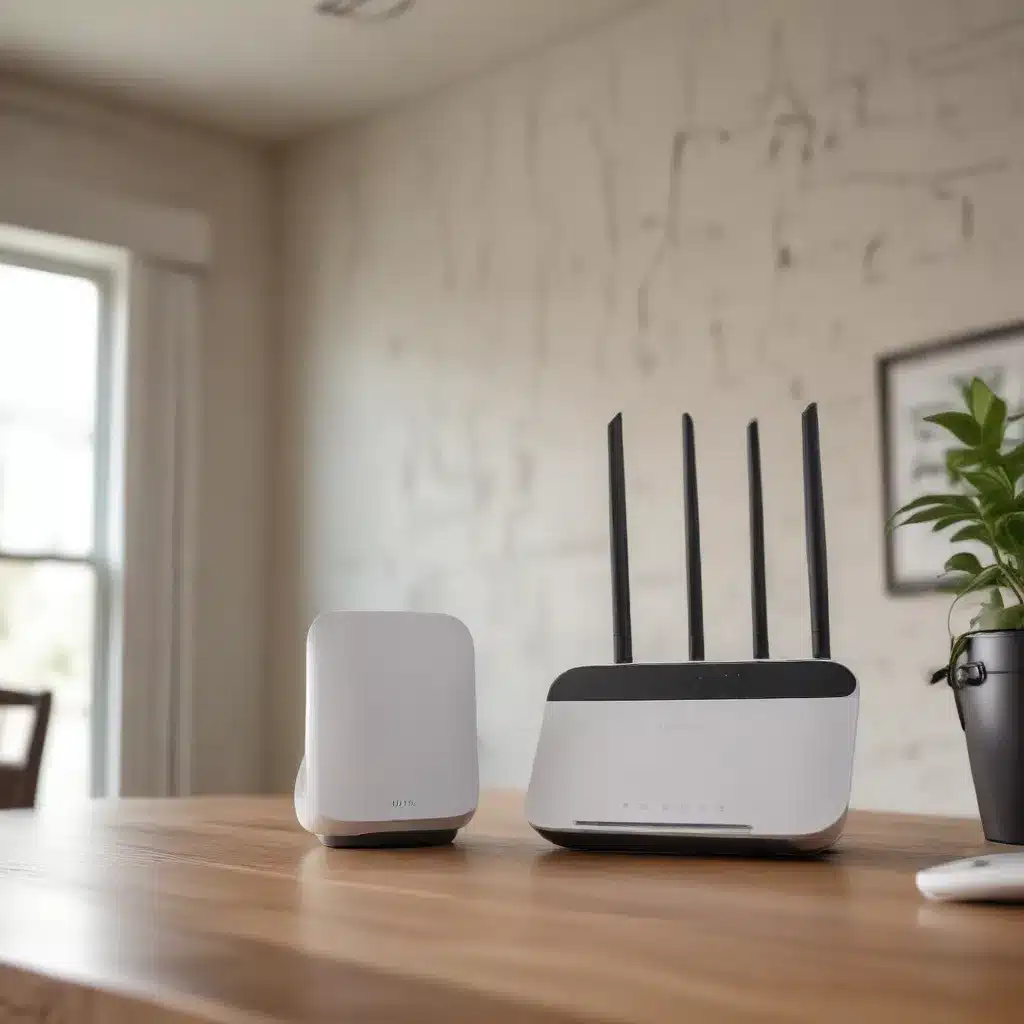
Establishing a Strong Foundation for Your Home Network
As an experienced IT professional, I understand the importance of a reliable and high-performing wireless network in today’s connected world. Whether you’re working from home, streaming your favorite shows, or simply browsing the web, a robust wireless setup can make all the difference in your user experience. In this comprehensive guide, I’ll share practical tips and in-depth insights to help you set up a wireless network that delivers optimal coverage, performance, and stability throughout your home.
Choosing the Right Router and Access Points
The foundation of your wireless network starts with the right hardware. When selecting a router, look for the latest Wi-Fi standards, such as 802.11ac or 802.11ax (also known as Wi-Fi 5 or Wi-Fi 6), which offer faster speeds, improved range, and better performance in congested environments. Additionally, consider routers with advanced features like beamforming, MU-MIMO, and dual-band or tri-band capabilities to enhance your network’s capabilities.
For larger homes or multi-story buildings, strategically placed access points (APs) can significantly improve wireless coverage. Opt for access points that are compatible with your router and support the same Wi-Fi standards. Ensure that the APs are positioned in central locations, elevated if possible, and avoid obstructions like walls, floors, and metal objects that can interfere with the wireless signals.
Optimizing Wireless Channel Selection
Wireless networks operate on different channels, and selecting the right channel can help minimize interference and improve performance. Start by identifying the channels used by neighboring wireless networks in your area. You can use free software like Wi-Fi Analyzer or Netspot to scan your environment and determine the least crowded channels.
Once you’ve identified the optimal channels, configure your router and access points to use them. Many modern wireless devices can automatically select the best channel, but you can also manually set the channel through your router’s administration interface. Remember to periodically check and adjust the channel selection to maintain optimal performance as network conditions in your area may change over time.
Optimizing Wireless Coverage and Performance
Placement and Orientation of Wireless Devices
The physical placement and orientation of your wireless devices can significantly impact the quality of your network. Avoid placing your router or access points near potential sources of interference, such as microwave ovens, Bluetooth devices, or cordless phones operating on the 2.4GHz frequency. Instead, position them in central locations, elevated if possible, and ensure that the antennas are oriented correctly to maximize signal coverage.
For multi-story homes, consider placing the router or primary access point on the upper floor to provide better coverage for the lower levels. If you have devices that struggle with connectivity in certain areas, consider adding additional access points or wireless extenders to fill in the coverage gaps.
Wireless Interference Mitigation
Wireless interference can be a common issue, especially in densely populated areas or homes with numerous wireless devices. To mitigate interference, start by identifying and minimizing the use of devices that operate on the 2.4GHz frequency, as this band can become congested more quickly. Consider upgrading to devices that support the 5GHz frequency band, which is less prone to interference.
If you have the option, configure your wireless network to use the 5GHz band for high-bandwidth activities, such as video streaming or large file transfers, while reserving the 2.4GHz band for lower-bandwidth tasks like web browsing or internet-connected smart home devices.
Maximizing Wireless Performance
To ensure optimal wireless performance, consider the following tips:
- Firmware Updates: Regularly check your router and access point manufacturers’ websites for firmware updates, as these often include performance improvements and bug fixes.
- Wireless Network Adapter Upgrades: If your devices are using older wireless network adapters, consider upgrading them to the latest Wi-Fi standards for improved range and speed.
- Wireless Security Configuration: Ensure that your wireless network is properly secured with the latest WPA3 or WPA2-AES encryption protocols to prevent unauthorized access and potential performance issues.
- Network Traffic Prioritization: Some routers and access points offer quality of service (QoS) features that allow you to prioritize network traffic for specific applications or devices, ensuring that critical activities like video conferencing or online gaming are not affected by other network usage.
Troubleshooting and Maintaining Your Wireless Network
Even with a well-designed and optimized wireless network, issues can occasionally arise. When faced with connectivity problems or performance degradation, try the following troubleshooting steps:
- Reboot Your Devices: Start by rebooting your router, access points, and any connected devices to clear any temporary glitches or issues.
- Check for Interference: Use a tool like Wi-Fi Analyzer to identify potential sources of interference and adjust your wireless channel selection accordingly.
- Update Drivers and Firmware: Ensure that your router, access points, and wireless network adapters are running the latest firmware and drivers, which may address known issues or improve performance.
- Monitor Network Performance: Use online tools like Speedtest to regularly check your network’s upload and download speeds, as well as latency, to identify any degradation in performance.
- Seek Professional Assistance: If you’ve exhausted all troubleshooting options and are still experiencing persistent issues, consider contacting your internet service provider or a qualified IT professional for further assistance.
Regular maintenance and monitoring of your wireless network can help prevent issues and ensure a consistently positive user experience. By following the tips and techniques outlined in this article, you’ll be well on your way to setting up a robust, reliable, and high-performing wireless network in your home.
For more information and resources on home networking, computer repair, and IT solutions, visit the IT Fix blog.












